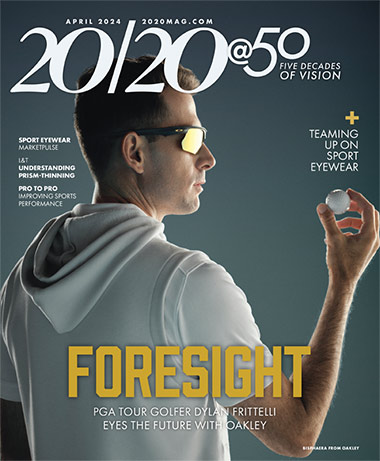Sponsored by Neurolens
Lori Passarelli, ABOM

In this age of online optical shops, deep discount chain stores and plenty of brick-and-mortar competition, settling for mediocracy or ordinariness in your practice is a surefire way to get lost in the crowd. Use specialization as an opportunity to attract new customers. With Neurolens, you will offer solutions not easily found elsewhere and certainly not available online. Offering services that solve problems and provide relief for patients build loyal customers—the types of customers who tell their friends and family about their outcomes. There is no better way to grow your business than happy patients spreading the word.
Neurolens technology provides a proven and reliable way to generate cash flow while providing exceptional service to your patients. As stated in a previous article in this series, a study of over 160,000 people conducted by Neurolens showed that more than 2 out of every 3 people have symptoms of eye misalignment, a phenomenon known as trigeminal dysphoria. Trigeminal dysphoria results when the fifth cranial nerve overstimulates during prolonged screen use as the eyes attempt to reconcile peripheral and central vision during convergence. This overstimulation causes symptoms of digital vision syndrome, including eyestrain, dry or watery eyes, neck and shoulder pain, and headaches. Neurolens effectively addresses these symptoms by employing a contoured prism positioned strategically through the lens, placing the correction where it is needed most.
There are a few reliable ways to increase profits and stimulate practice growth. One is to attract new patients to your practice, and the other is to upsell to your loyal repeat patients. Neurolens makes both scenarios possible. First, Neurolens is actively pushing new patients into their provider practices with direct-to-consumer advertising, marketing co-op programs for providers and their popular online “Take The Test” and “Find A Doctor” tools. In fact, almost 20 patients per day request appointments with Neurolens providers through the Neurolens website! They also invest highly into maximizing the patient experience once in the practice, making sure your conversion rates remain high. Finally, when we consider that trigeminal dysphoria can be present in people with refractive error and emmetropes alike, the opportunity for selling Neurolenses becomes endless. In fact, many Neurolens patients wear plano Neurolenses over their contact lenses while doing near work—and these patients have some of the highest symptom relief scores!
The Neurolens process is simple and designed to maximize the patient’s experience in your practice. The process begins with a simple symptom screener that patients can complete on their mobile device while in the waiting area. Their information will automatically pass to your Neurolens Measurement Device, Gen 2—or NMD2. While testing for phorias is typically lengthy and tedious, the NMD2 is a quick two-minute test that technicians can administer. The NMD2 takes thousands of data points per patient and can identify eye misalignment to 0.01 prism diopters. For the majority of your patients that will present as symptomatic, Neurolenses with contoured prism are available in single vision, office and progressive designs.
As professionals, it is unfortunate that many of us overlook the symptoms of digital vision syndrome that so many of our patients deal with regularly. Patients are more educated than ever and demand our expertise; we must be ready for them. While your colleagues may rely solely on “power boost” lenses or blue light filters to alleviate digital vision syndrome, offering Neurolens as a more reliably effective solution will distinguish you from the competition. Incorporating Neurolens technology to diagnose and treat trigeminal dysphoria is a great way to tap into a vastly underserved market while showcasing that you are up on the latest technology. Symptoms not otherwise communicated are identified, the test on the NMD2 test device is performed, and we have their attention and an opportunity to sell not only a fabulous pair of glasses, but to inspire them with our knowledge. Referrals are sure to follow.
“I was pleasantly surprised by the positive response to this lens, and I quickly found that this lens helped patients in ways I was unable to help them in the last 30 years,” says Dora Sudarsky, OD, who incorporated Neurolens into her Burlington, Vt., practice. “I could improve their vision but also help them feel better. When you think about how screen time has increased in the last decade, this lens has become a game changer for my patients.”













